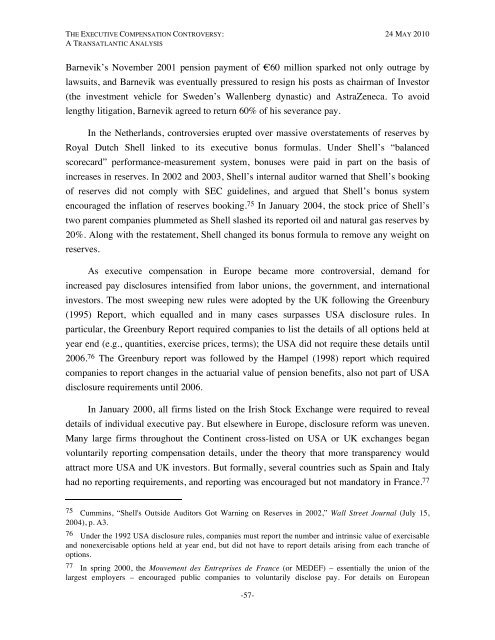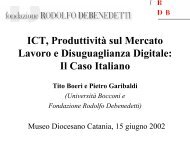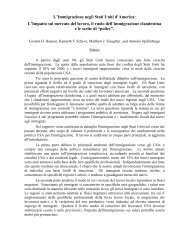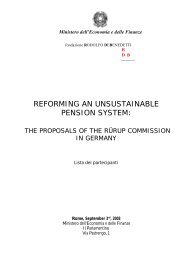The Executive Compensation Controversy - Fondazione Rodolfo ...
The Executive Compensation Controversy - Fondazione Rodolfo ...
The Executive Compensation Controversy - Fondazione Rodolfo ...
You also want an ePaper? Increase the reach of your titles
YUMPU automatically turns print PDFs into web optimized ePapers that Google loves.
THE EXECUTIVE COMPENSATION CONTROVERSY: 24 MAY 2010A TRANSATLANTIC ANALYSISBarnevik’s November 2001 pension payment of €60 million sparked not only outrage bylawsuits, and Barnevik was eventually pressured to resign his posts as chairman of Investor(the investment vehicle for Sweden’s Wallenberg dynastic) and AstraZeneca. To avoidlengthy litigation, Barnevik agreed to return 60% of his severance pay.In the Netherlands, controversies erupted over massive overstatements of reserves byRoyal Dutch Shell linked to its executive bonus formulas. Under Shell’s “balancedscorecard” performance-measurement system, bonuses were paid in part on the basis ofincreases in reserves. In 2002 and 2003, Shell’s internal auditor warned that Shell’s bookingof reserves did not comply with SEC guidelines, and argued that Shell’s bonus systemencouraged the inflation of reserves booking. 75 In January 2004, the stock price of Shell’stwo parent companies plummeted as Shell slashed its reported oil and natural gas reserves by20%. Along with the restatement, Shell changed its bonus formula to remove any weight onreserves.As executive compensation in Europe became more controversial, demand forincreased pay disclosures intensified from labor unions, the government, and internationalinvestors. <strong>The</strong> most sweeping new rules were adopted by the UK following the Greenbury(1995) Report, which equalled and in many cases surpasses USA disclosure rules. Inparticular, the Greenbury Report required companies to list the details of all options held atyear end (e.g., quantities, exercise prices, terms); the USA did not require these details until2006. 76 <strong>The</strong> Greenbury report was followed by the Hampel (1998) report which requiredcompanies to report changes in the actuarial value of pension benefits, also not part of USAdisclosure requirements until 2006.In January 2000, all firms listed on the Irish Stock Exchange were required to revealdetails of individual executive pay. But elsewhere in Europe, disclosure reform was uneven.Many large firms throughout the Continent cross-listed on USA or UK exchanges beganvoluntarily reporting compensation details, under the theory that more transparency wouldattract more USA and UK investors. But formally, several countries such as Spain and Italyhad no reporting requirements, and reporting was encouraged but not mandatory in France. 7775 Cummins, “Shell's Outside Auditors Got Warning on Reserves in 2002,” Wall Street Journal (July 15,2004), p. A3.76 Under the 1992 USA disclosure rules, companies must report the number and intrinsic value of exercisableand nonexercisable options held at year end, but did not have to report details arising from each tranche ofoptions.77 In spring 2000, the Mouvement des Entreprises de France (or MEDEF) – essentially the union of thelargest employers – encouraged public companies to voluntarily disclose pay. For details on European-57-









